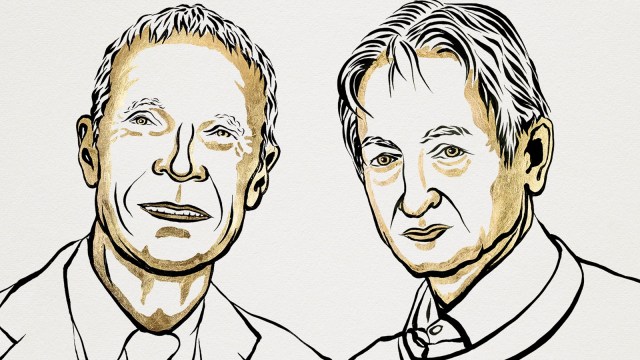
The Nobel Prize in Physics 2024 has just been announced by the Royal Swedish Academy of Sciences and has been awarded to John Hopfield and Geoffrey Hinton. While Hopfield, 91, is an American scientist and widely known for his study of associative neural networks, the British-Canadian Hinton, 76, is referred to as the “godfather of Artificial Intelligence” (AI). Traditionally, this prestigious award has honoured achievements in areas such as particle physics, quantum mechanics, and cosmology. However, as science and technology evolve, there has been a compelling argument for expanding the scope of the Nobel Prize in Physics to include outstanding contributions to AI and neural networks. This expansion is justified by the deep connections these fields share with fundamental physics principles and their transformative impact on physics research itself.
At the core of both AI and neural networks lie concepts deeply rooted in physics. The fundamental nature of intelligence and computation is, at its essence, a physical phenomenon governed by the laws of nature. The work of Claude Shannon in information theory, for instance, established a crucial bridge between information processing and physical systems. This connection has only grown stronger with time, as concepts from statistical physics have become instrumental in analysing and improving machine learning algorithms.
Neural networks, in particular, draw inspiration from the physical structure and function of biological brains. The mathematical models underlying artificial neural networks have strong parallels with systems studied in statistical physics. For example, the behaviour of large neural networks can be analysed using techniques from spin glass theory, a branch of statistical mechanics. This connection has not only improved our understanding of neural networks but has also led to new insights in physics.
The deep learning revolution, which has transformed AI in recent years, relies heavily on techniques borrowed from statistical mechanics. The optimisation of neural networks often employs methods analogous to those used to study phase transitions and critical phenomena in physical systems. Concepts such as energy landscapes, used to describe the configuration space of complex physical systems, find direct application in understanding the training dynamics of deep neural networks.
Further, the principles of symmetry and invariance, fundamental to physics, play a crucial role in the design of modern neural network architectures. Convolutional neural networks, for instance, exploit translational invariance in a manner reminiscent of fundamental physical laws that remain unchanged under spatial translations. Similarly, the attention mechanism in transformer models can be viewed through the lens of physical interaction theories.
The intersection of quantum mechanics and AI represents another frontier where physics and computer science converge. Quantum machine learning algorithms promise to solve certain problems exponentially faster than classical methods, with far-reaching implications across various fields. Researchers working on quantum AI systems are not only pushing the boundaries of quantum physics but are also reimagining the future of computation and intelligence.
AI and neural networks are not just beneficiaries of physical principles; they are also revolutionising physics research itself. Machine learning algorithms are now indispensable tools for analysing vast datasets from particle accelerators, detecting gravitational waves, and even formulating new physical theories. In some instances, AI systems have uncovered patterns and relationships that eluded human scientists, leading to novel insights and hypotheses. This symbiotic relationship between AI and physics research underscores the increasingly blurred lines between these fields and strengthens the case for recognising AI achievements within the purview of the Nobel Prize in Physics.
The impact of AI and neural networks extends beyond their applications in fundamental physics. These technologies are being deployed to address some of humanity’s most pressing challenges, many of which have strong connections to physics. Climate modelling, for example, integrates the physical understanding of Earth systems with advanced machine learning techniques to improve predictions and inform policy decisions. Similarly, AI is playing a pivotal role in the development of fusion energy, optimising plasma confinement and reactor designs in ways that could finally make this clean energy source commercially viable.
In materials science, AI and neural networks are accelerating the discovery and design of new materials with unprecedented properties. This field, deeply rooted in quantum mechanics and condensed matter physics, is being transformed by machine learning approaches that can predict material properties and guide experimental research. The scientists developing these AI-driven methods are working at the intersection of physics and computer science, making contributions that merit consideration for physics’ highest honour.
Expanding the Nobel Prize in Physics to encompass groundbreaking work in AI and neural networks thus reflects the evolving nature of scientific inquiry in the 21st century. Interdisciplinary research is becoming increasingly important, with many of the most significant breakthroughs occurring at the intersections of traditional fields. By recognising achievements in AI and neural networks, the Nobel Committee has acknowledged this shift and possibly encouraged further cross-pollination between disciplines while also not diluting the focus of the prize or overlapping with other categories like the Nobel Prize in Chemistry or the Turing Award in computer science.
As we stand on the brink of new scientific revolutions enabled by AI and neural networks, it is fitting that the Nobel Prize in Physics has evolved to reflect the changing landscape of physics and its ever-expanding frontiers.
The writer, a defence and cyber security analyst, is former country head of General Dynamics



